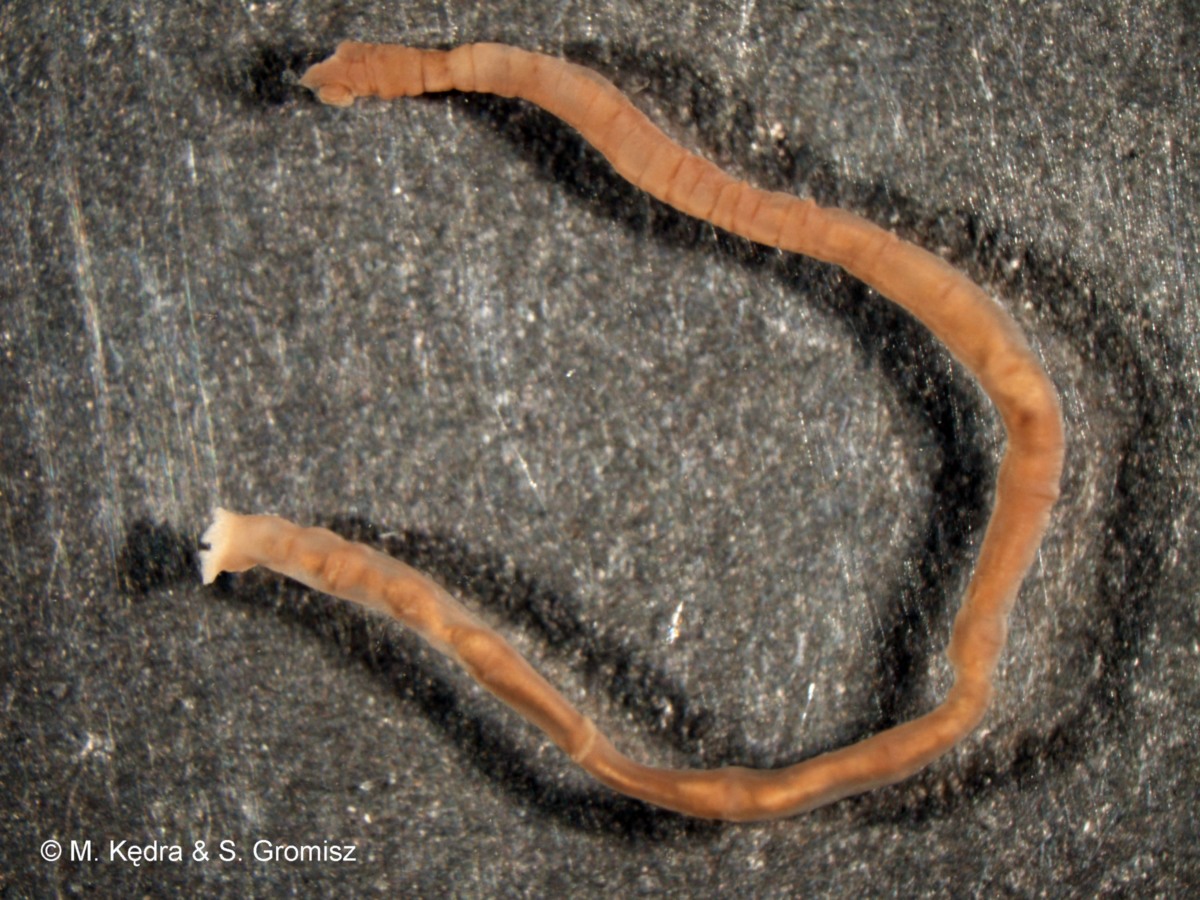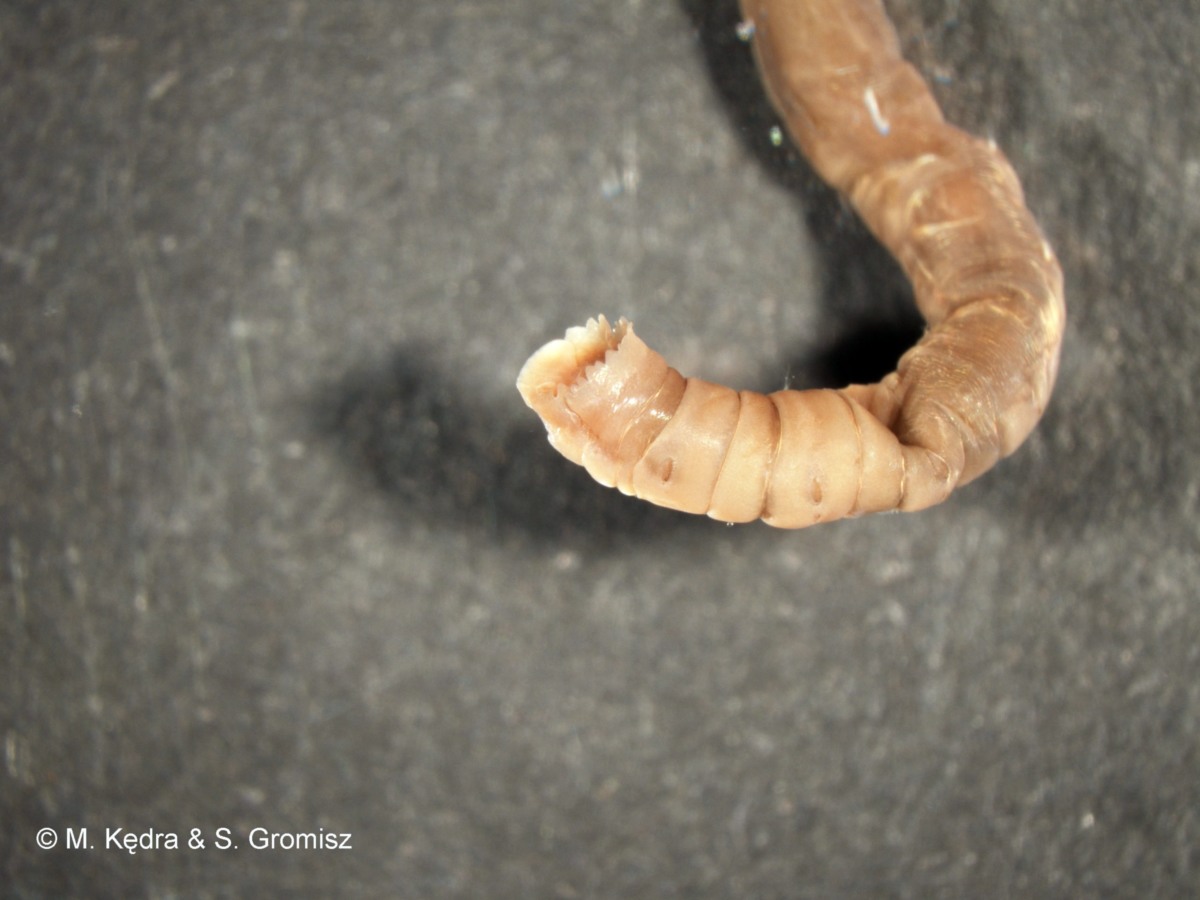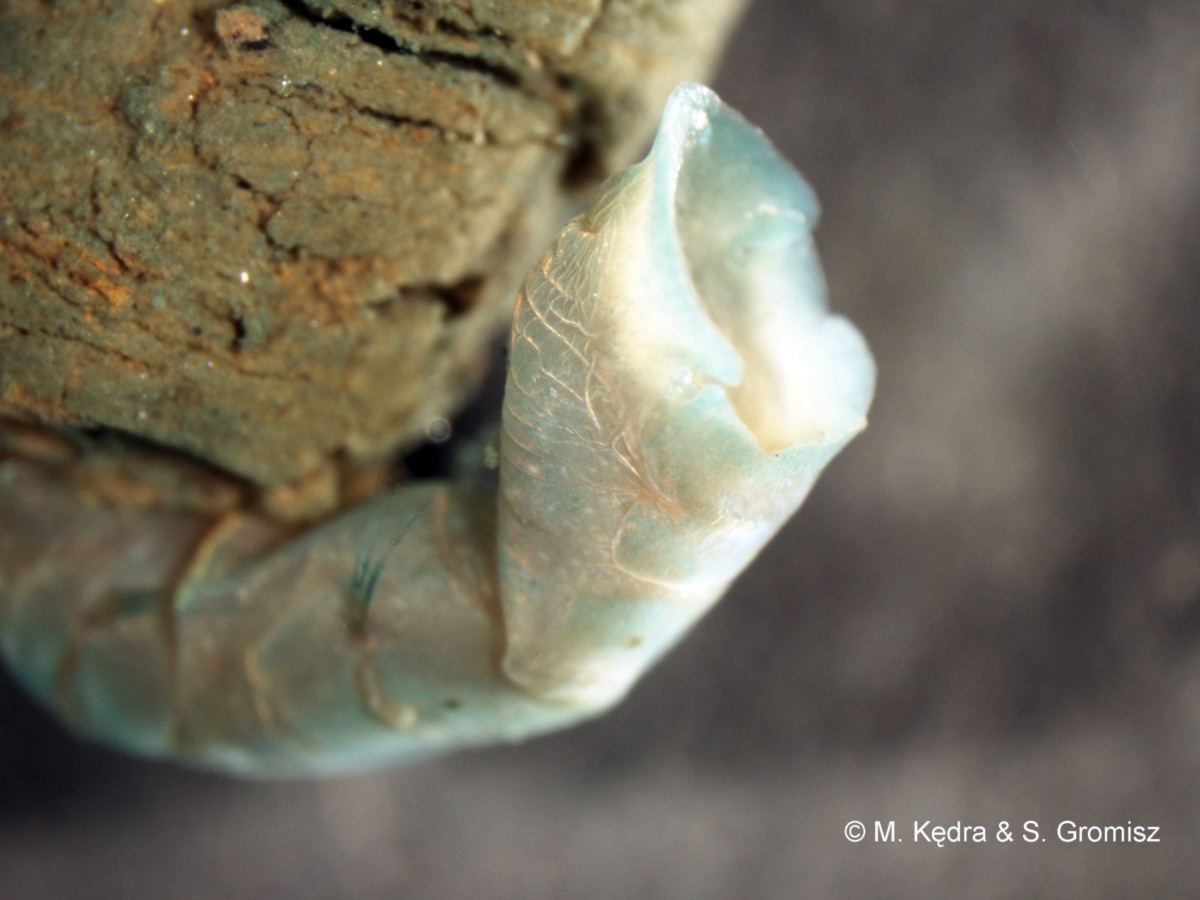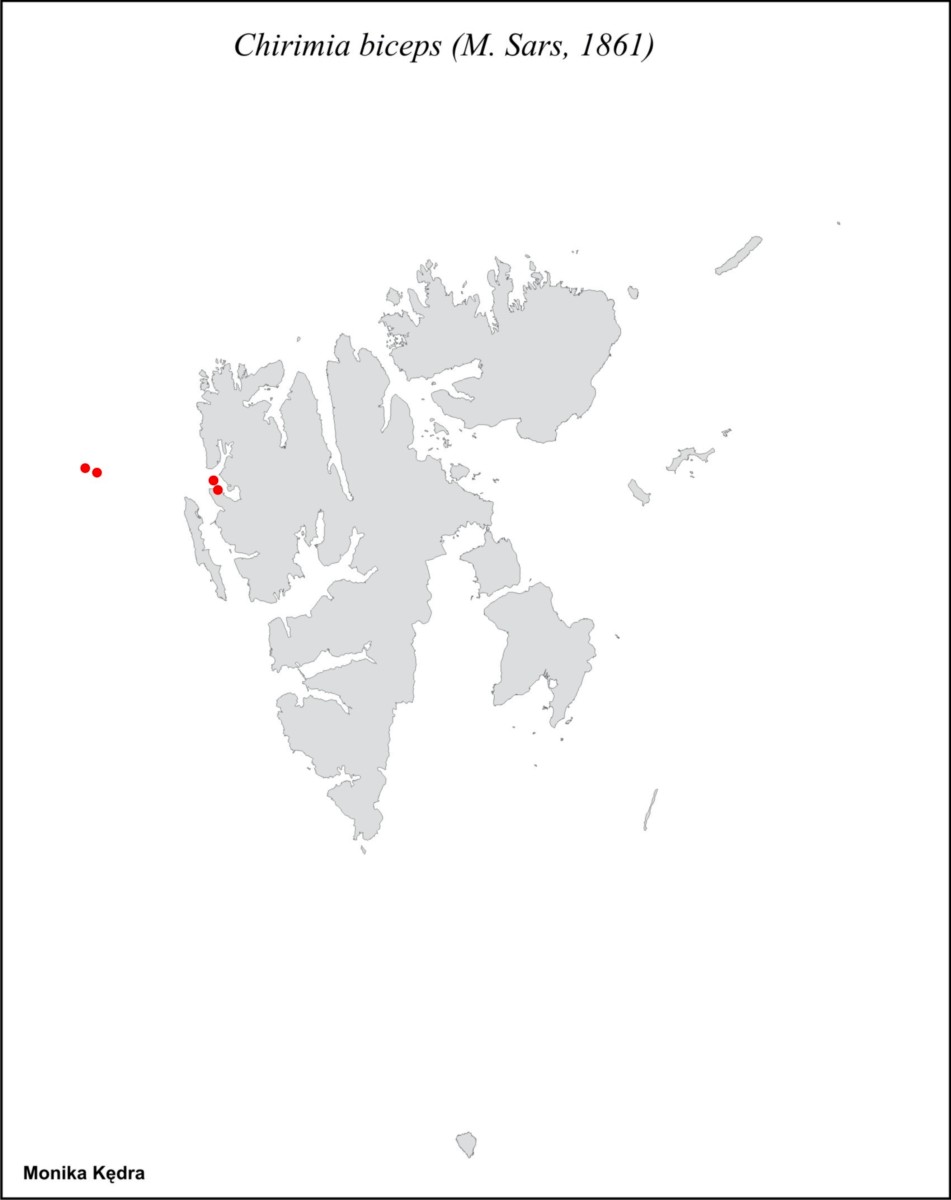Chirimia biceps (M. Sars, 1861)

|

|

|

|
Clymene biceps Sars, 1861
Maldane biceps Michaelsen, 1896
Asychis biceps Arwidsson, 1906
Distinguishing characteristics
Head with cephalic plate and cephalic rim serrated along its posterior margin with irregularly wrinkled lateral lobes.
Pygidium with deep lateral incisions and both dorsal and ventral margin serrated or crenulate.
Species description
Body cylindrical, head with rounded cephalic plate. Cephalic rim serrated along its posterior margin with irregularly wrinkled lateral lobes. 19 chaetigers. First chaetiger enlarged into a collar. Notopodial chaetae capillaries, on anterior segments winged with long tips, on posterior segments feathery chaetae present. Neurochaetae absent from the first chaetiger. One or two posterior segments without chaetae. Pygidium with oval to rounded anal plate, with lateral notches and with both dorsal and ventral margin serrated, crenulate or produced into irregular lobes. Tube - cylindrical and thin.
Size
Up to 180 mm for 19 chaetigers.
Color
Anterior irregularly dark-brown pigmentation. Posterior paler.
In alcohol yellowish with whitish glandular bands.
Habitat
In mud, sometimes in mixed bottoms with sand and shells. The vertical distribution extends from the upper sublittoral, 45 m down to 1000 m deep.
Mobility
Sedentary.
Feeding
Subsurface deposit feeder.
Grazer.
Life cycle
Distribution
Arctic, North Pacific, North Atlantic up to Mediterranean and Adriatic, Northern and middle North Sea, Skagerrak, Kattegat, possibly to eastern Baltic Sea.

